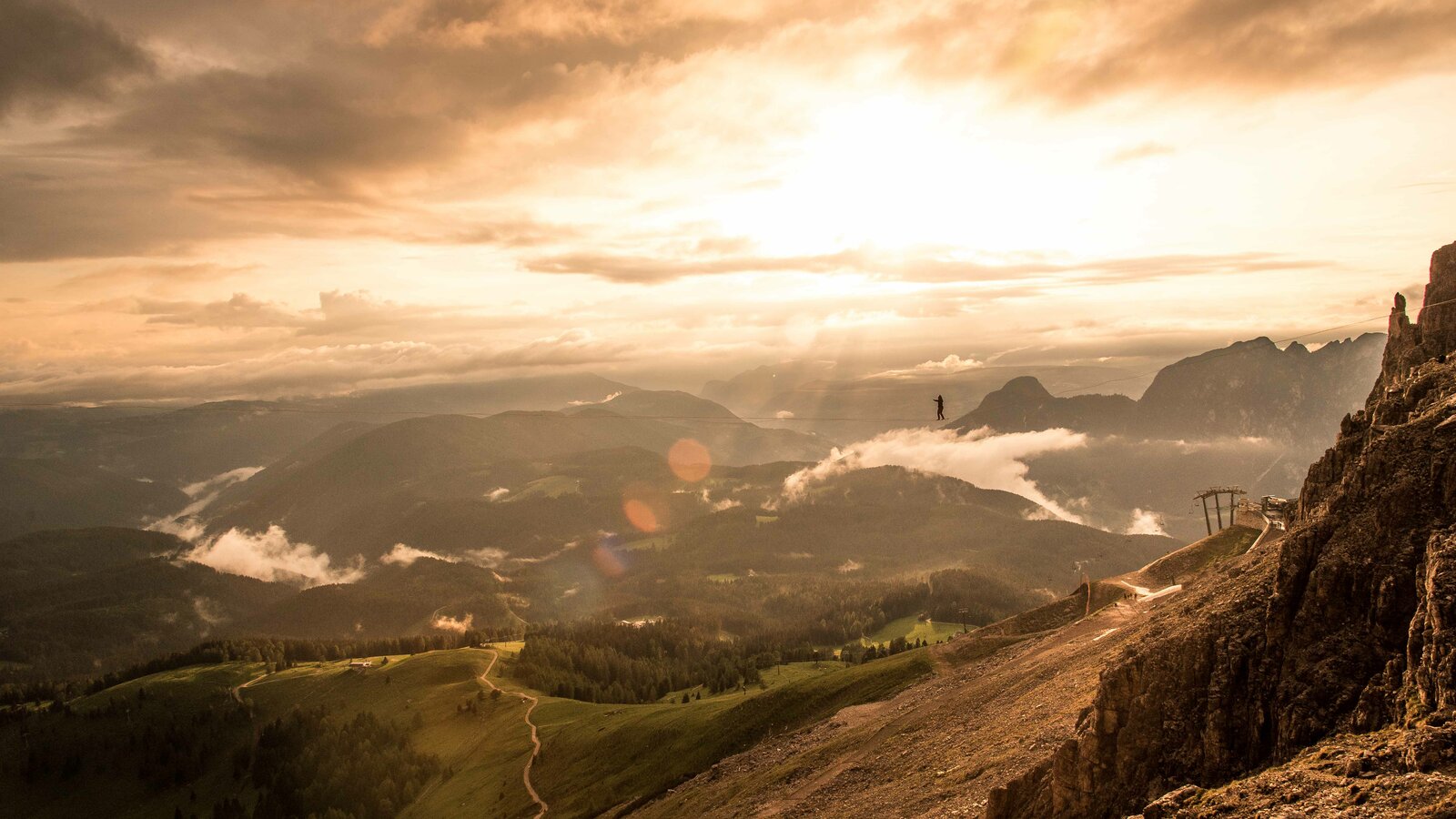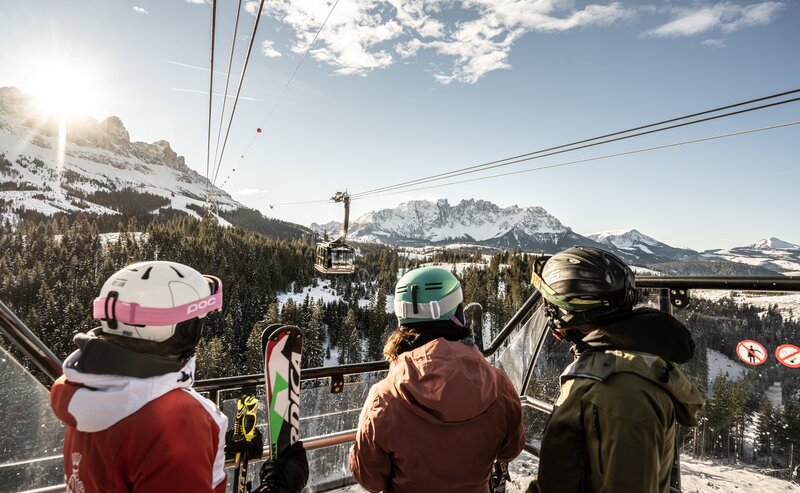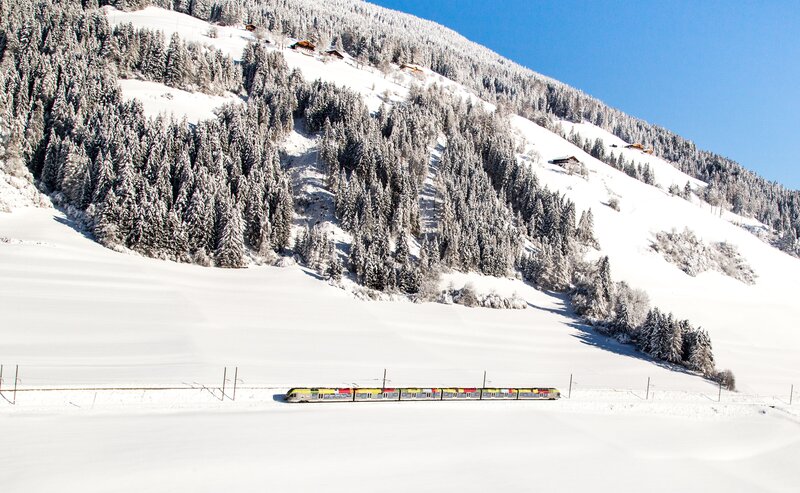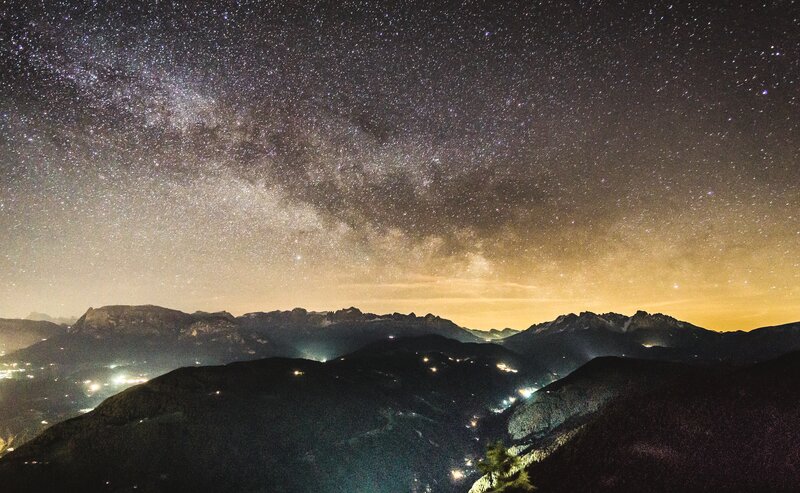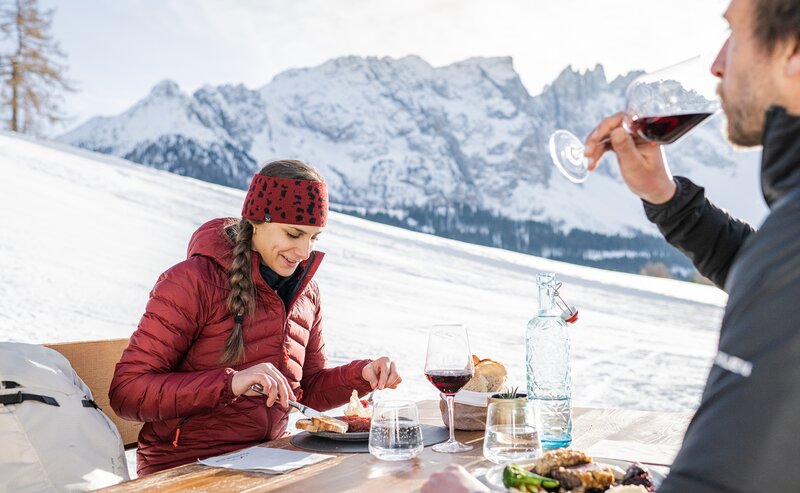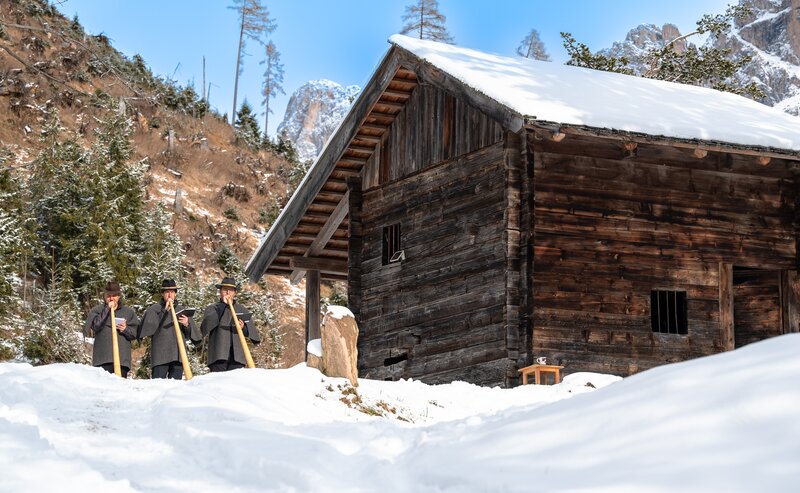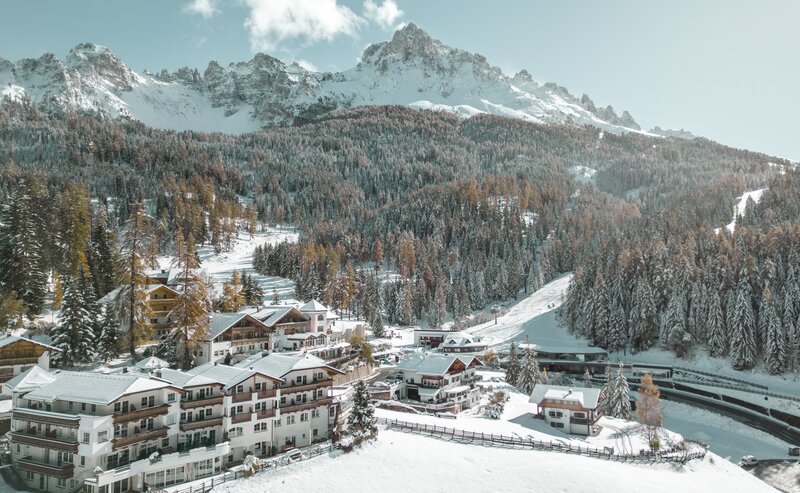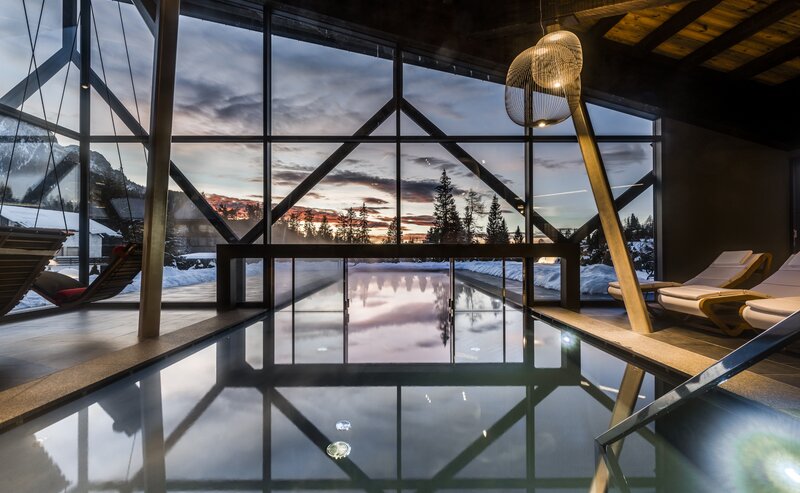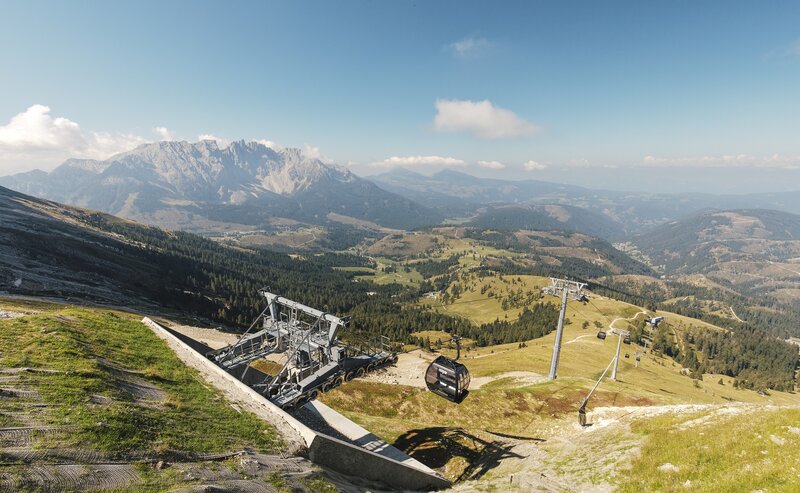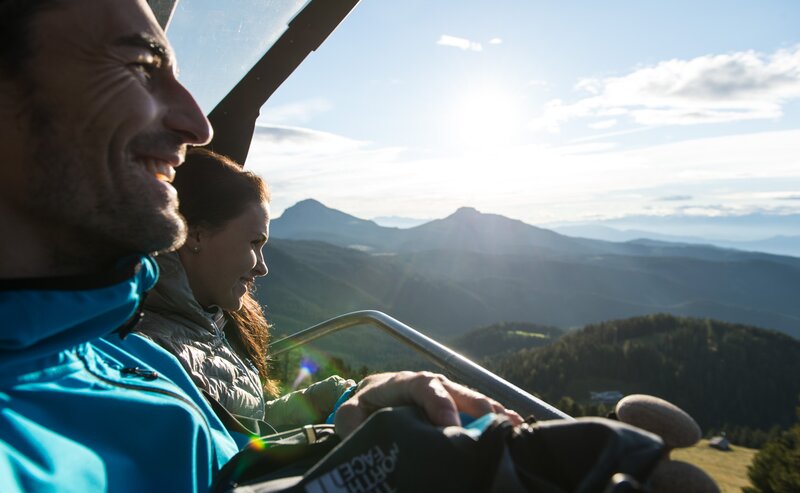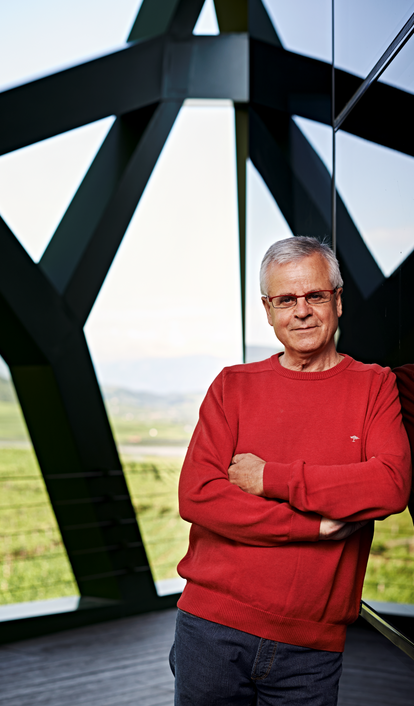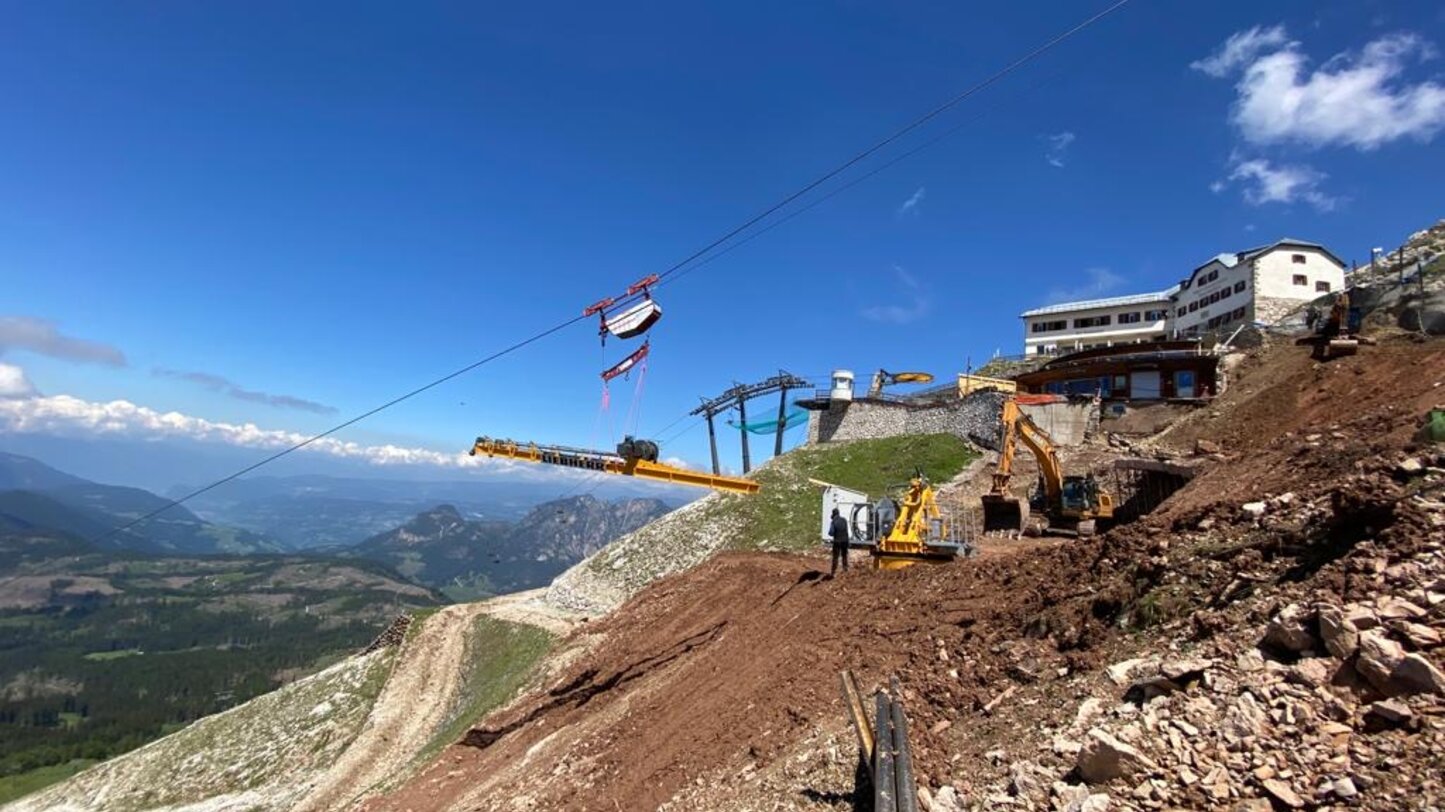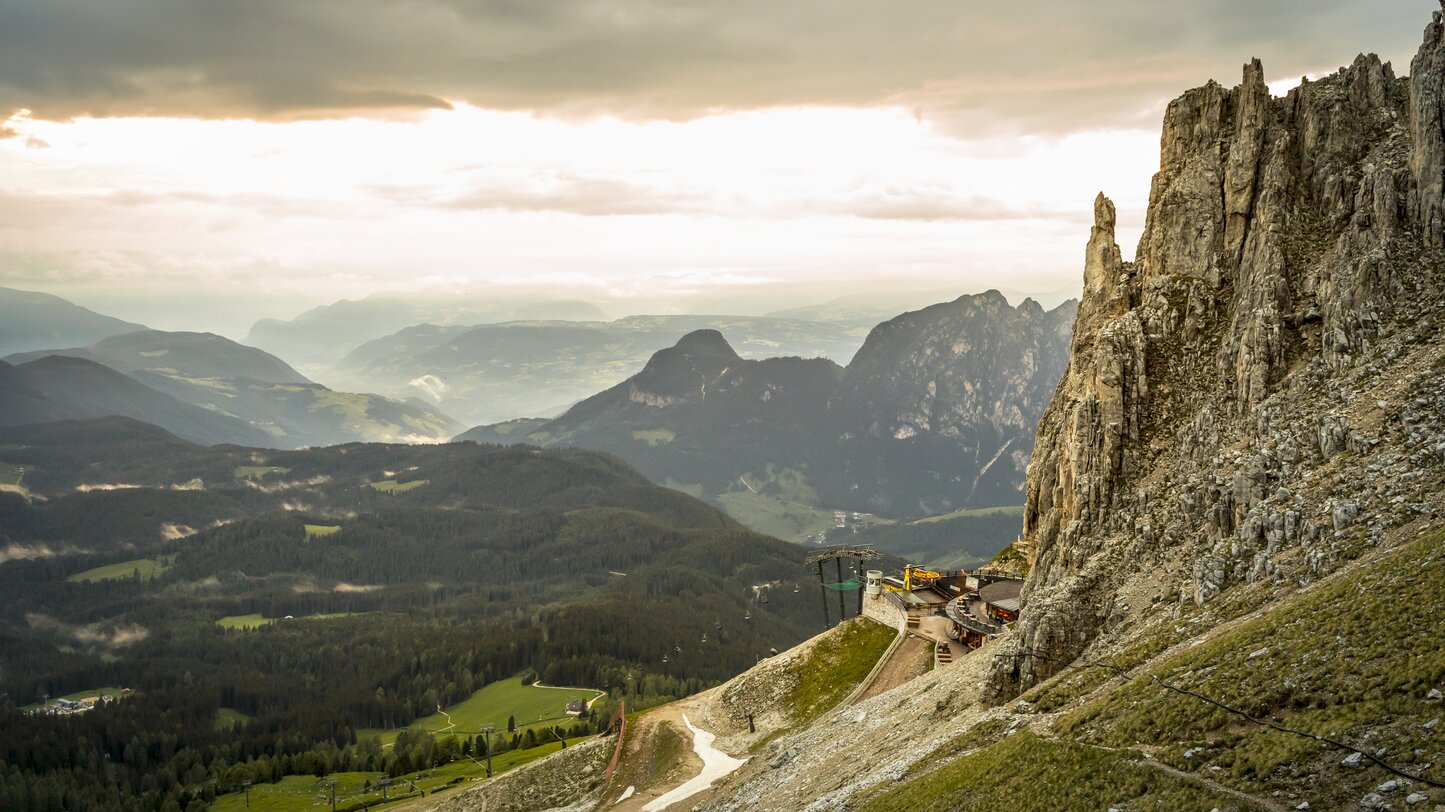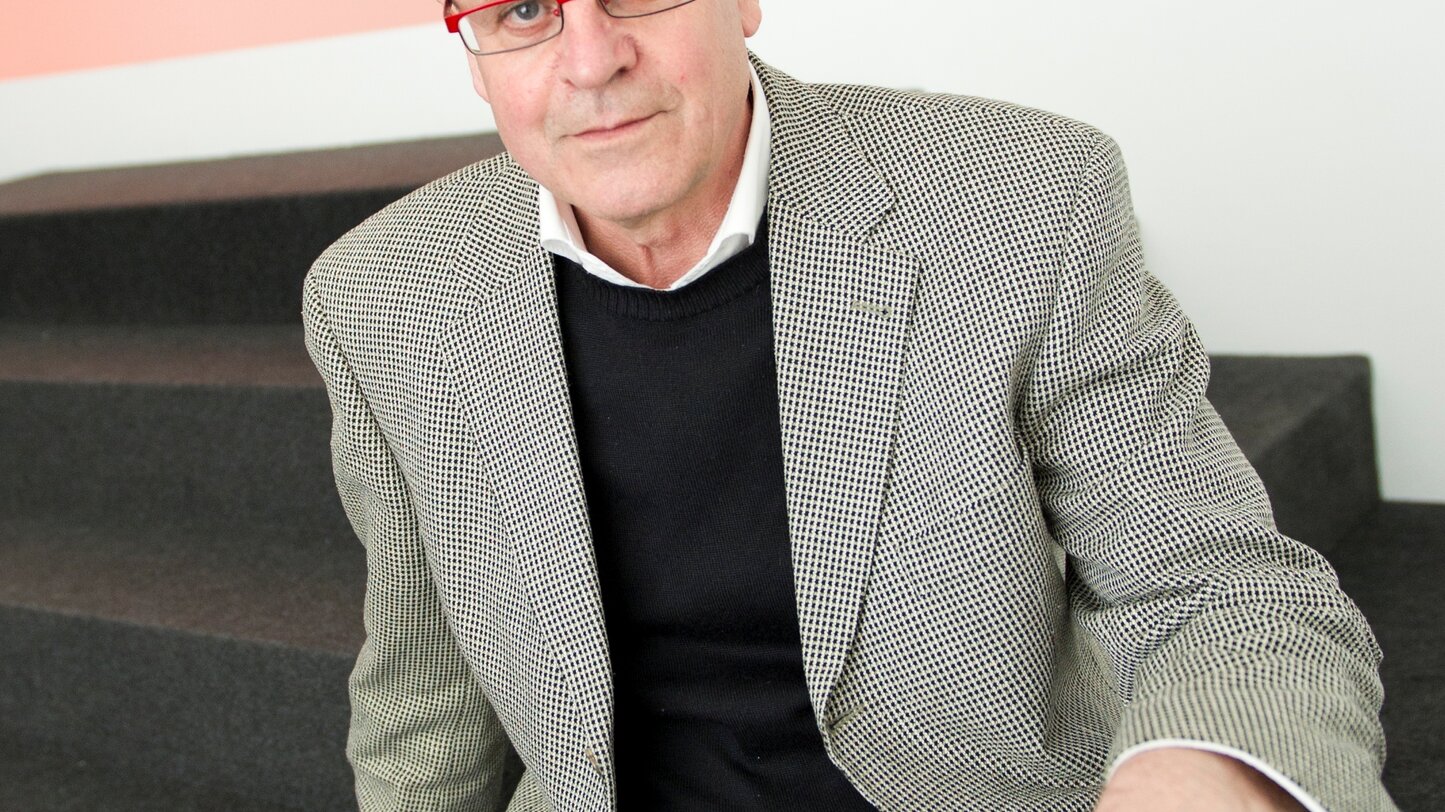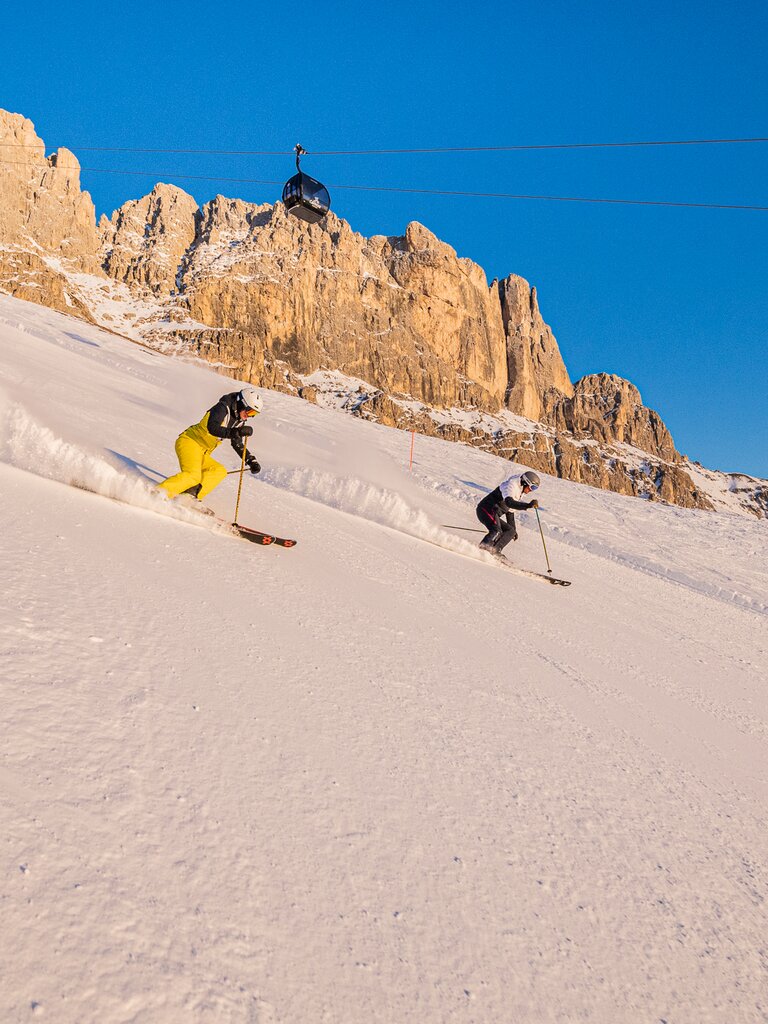Sparkling, subterranean, legendary:
How Architect Werner Tscholl protects Mother Nature's starring role
"Up here amidst the gray cliffs of the fabulous 'Rose Garden,' where today one sees only rocky wasteland, was once King Laurin's legendary rose garden.King Laurin was the ruler of a great realm of dwarves who delved into the mountains in search of jewels and precious ores. He possessed a subterranean palace made of sparkling quartz. But his special pride and joy was the great garden at the entrance of his underground crystal mountain in which countless beautiful roses blossomed and poured out their scent…"
Thus begins the famous legend of King Laurin. And it was precisely this image of the underground palace made of sparkling crystal that inspired star architect Werner Tscholl in designing the new gondola-type cableway at the Rose Garden. But let's start at the beginning: It was via Maria Gufler (Head of Marketing) and the former Timmelsjoch structures that this native of Vinschgau came to the "König Laurin" aerial cableway project. For Tscholl – who has already completed a variety of projects – this is the first project of this kind. "Architects have to adapt their concepts to various different special circumstances. This was the case in this instance, too. Basically speaking, architecture and high-altitude landscapes aren't compatible. This requires that the architect tread very cautiously when approaching this theme," explains Tscholl. In order to preserve the overwhelmingly beautiful and unique landscape of the Rose Garden, the sensible approach was to embed the various structures into the landscape. That applies to the mountain stations, too – i.e., purely functional structures consisting solely of technical materials like plastic and glass – all characteristics that are out of place up here, says Tscholl. For that reason, his motto was, "Everything with a technical appearance has to vanish so that the cableway station itself is no longer visible."
The legend of King Laurin likewise tells of subterranean crystal palaces – so why shouldn't the new mountain station adhere to this myth?
Committing the inspiration to paper
"When I came here to the Rose Garden for the first time in a long time, its mighty towers and the whole mythos surrounding the mountain became alive for me again. So it's quite logical that this atmosphere is the first thing that inspires one here."
Inspiration is one thing – unique ideas are another. In the case of Werner Tscholl, each of these ideas had a different genesis. Some ideas just popped into his head, while he had to brood over others for days or weeks. In any case, he always took the landscape into account – that is a habit of this man who was chosen as the 2016 "Architect of Italy." "I have to have the entire image in my head. I have to be able to mentally wander in and out of the building. Everything has to be there in my imagination, down to the last detail. Otherwise, I can't even begin to sketch. Many of my larger projects were based on sudden epiphanies. Of course, the disadvantage of a concrete idea like that is that it's not so easy to free oneself of it. It is then a 'pre-ordained' path – and leads one straight to the implementation."
High-altitude architecture: An adventure!
At an altitude of 2,337 meters above sea-level, atmospheric conditions represent a big challenge for construction projects: Storms can blow, it can snow, or torrential rains can fall. But the construction company and the lift installation company did a praiseworthy job, says Tscholl. At the moment, only these two companies are still at work on the project; at a later point in time, technical equipment companies (to mount the escalators, install the electrical wiring, etc.) will then be busy. "Basically speaking, fewer companies are involved in a project of this kind than in the construction of a residential dwelling," he explains. But nothing is left to chance up here: Everything – from the initial sketches, the bidding process, all the way up to deciding which materials will be used and what companies will be hired (and there are still more steps involved) – is a process which has now been going on for more than a year. And there are countless details that you will never be aware of in the finalized project. That's why Tscholl elaborates numerous different building plans and diagrams to ensure that everything fits perfectly.
Right now, the project is in the middle of the preparatory phase. At a high altitude like this, that's more complicated than in "normal" projects. "A roadway has to be set up to reach the site. A freight cableway has to be erected, and a crane brought into position. As soon as all these preparatory steps are completed, we can begin excavating. But then, too, we'll encounter a number of surprises. I'm sure that it will be an exciting building site, and that we'll have to deal with new challenges on a daily basis."
Becoming part of the mountain
Of course, every building project represents an intervention in the natural landscape. But as an architect, Werner Tscholl always aims to keep the "final results" as invisible to the eye as possible. In the Rose Garden, too, the construction project will alter nature, but Tscholl emphasizes: "In the final analysis, we return everything to the natural state in which we originally found it. When the work is completed, only an entrance and an exit will be visible. In time, Mother Nature will reclaim the landscape, and the casual observer will be almost wholly unaware of the fact that we were ever here."
Nevertheless: In the beginning, changes always elicit fear. That's why Tscholl's innovative ideas often encounter criticism and resistance. That was the case this time, too. "I encountered resistance from the start. (laughs) But that encourages me to try harder. Good architecture always elicits criticism because it is ahead of its time. Because it takes a novel approach. I don't draft and plan for myself, but rather for someone else and for the landscape." Ultimately, the resistance always faded away, to be replaced by interest and approval, continues the architect. "I hope that the opponents of this projects will one day stand in the Rose Garden and say, 'Hey, they did a pretty good job!'"
In any case, the hikers and skiers who come to Carezza in the future will expect a mystical experience: Once they arrive with the gondola-type cableway at the mountain station, the visitors will then enter a cave outfitted with special lighting elements reminiscent of King Laurin's subterranean crystal palace. But Mother Nature will still be the star, Tscholl stresses. The architecture will not stand in the forefront, but rather the impressive backdrop of the Dolomites.
Courage to innovate
Carezza Dolomites didn't take the easy way in deciding in favor of this project. From the financial point of view – and also to avoid all criticism – the destination could have instead had an ordinary mountain station built. But it decided instead for a "new" and also more-expensive form of architecture – especially in order to minimize the ecological footprint. Carezza thus demonstrates its courage shows that it is possible, even at high altitudes, to create architecture that goes hand in hand with Mother Nature – and that is an important and sustainable step into the future.
Fotocredit: Alberto Lavit, Manuel Ferrigato & Monsorno Thomas
